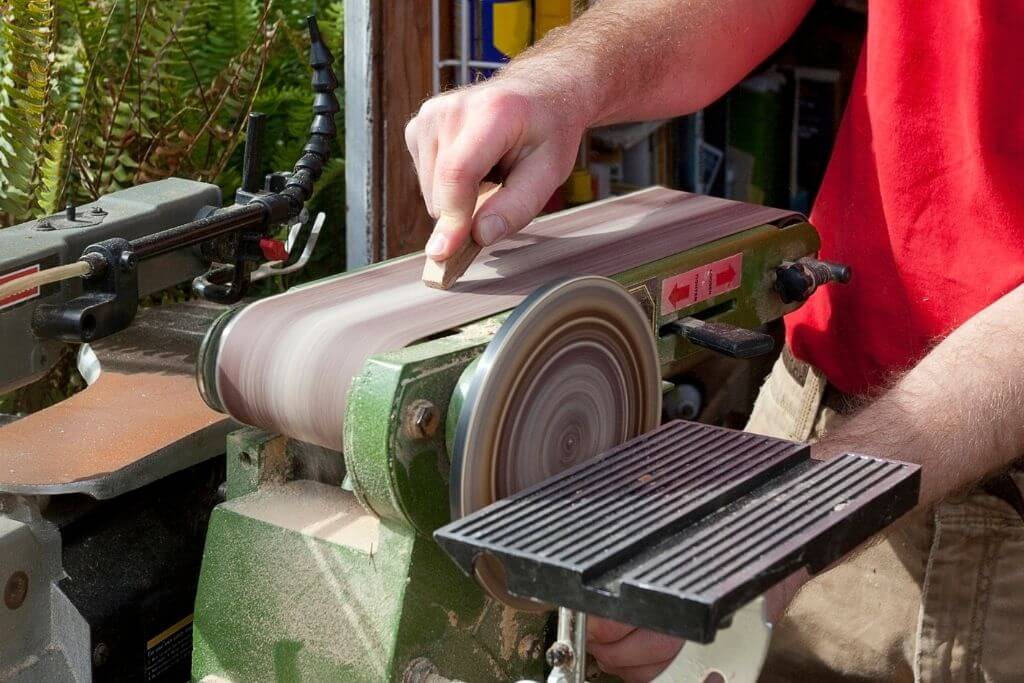
When your hands want to give up from flattening long timbers, it is time to think about a benchtop belt sander.
These machines can not only get the job done at a faster rate, but they can also deliver a better smoothness.
Getting the best benchtop belt sander is a must if you want to widen the range of your woodworking projects.
Here is a breakdown of the top suggestions. Also included in this guide are some comparisons and considerations you should know.
Table of Contents
- Top Rated Benchtop Belt Sanders Comparison
- What Are Benchtop Belt Sanders Typically Used For?
- Common Types of Benchtop Sanders
- 5 Best Benchtop Belt Sanders – Reviews
- How To Choose The Best Benchtop Belt Sander
- Frequently Asked Questions About Benchtop Belt Sander
- How To Choose Belts For My Sander?
- What Can’t Benchtop Belt Sanders Do?
- Why Does My Sander Keep Breaking Belts?
- When Should I Replace The Sanding Belt?
- What Is The Difference Between A Drum Sander And A Benchtop Belt Sander?
- What Is The Difference Between Belt Sanding And Spindle Sanding?
- Do I Need To Buy Sanding Belts From The Same Manufacturer?
- What Important Safety Tips Should I Follow When Use Benchtop Belt Sander?
- Conclusion
Top Rated Benchtop Belt Sanders Comparison
What Are Benchtop Belt Sanders Typically Used For?
Bench-mounted belt sanders are generally not the first choice for finishing furniture. But they work well in many beginning stages of a woodworking project and larger projects.
The aggressive leveling mechanism of these tools can quickly take off a large amount of material from the workpiece. Additionally, the weighted base provides excellent stability.
They can smooth out uneven surfaces and form the rough edges of the wood. Stripping off finish (like paint) is another common use of these benchtop sanders.
Equip them with fine-grit sandpaper, and you can sharpen metals (like knives) as well.
Common Types of Benchtop Sanders
Depending on the sanding mechanism, common benchtop sanders for workshops fall under several categories. Each of them excels at a unique array of woodworking applications.
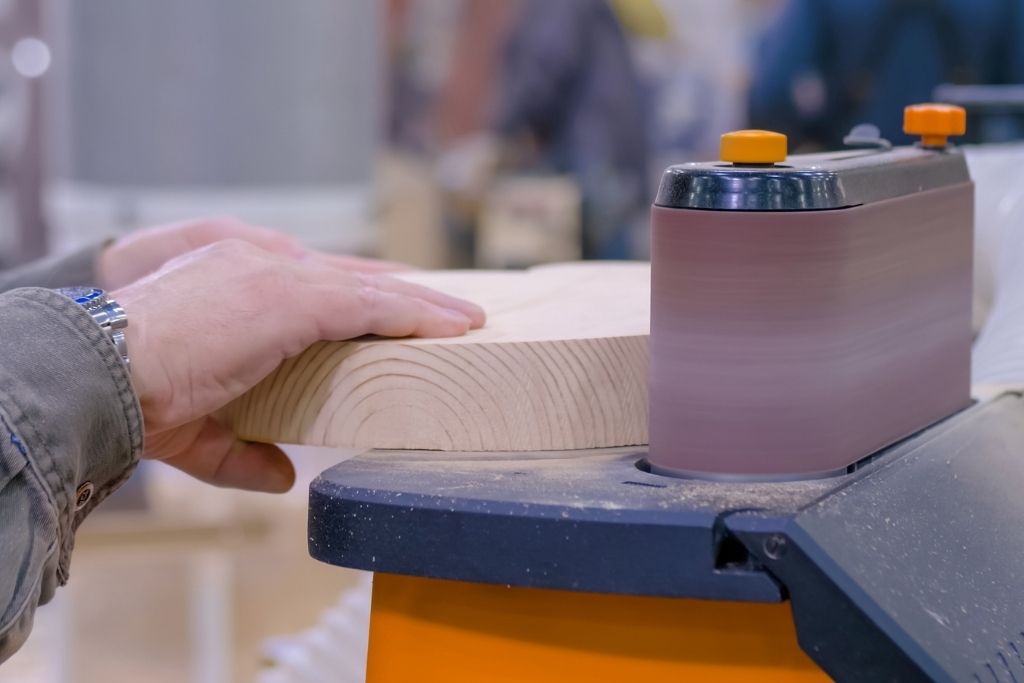
Disc Sanders
These models have one of the oldest and most reliable designs among sanding machines. They typically feature one sanding disc with abrasive paper adhered to its surfaces.
Disc sanders work best with small or thin objects, where they can adjust the angles to shape and smooth rough cuts.
These workpieces can either be too small to use with other bench-mounted sanders or may take a long time with handheld tools.
Disc sanders are usually cheaper than other benchtop sanding machines. The compact footprint and lightweight are other reasons they are a popular tool in workshops.
Belt Sanders
Instead of a single rotating disc, belt sanders use a long surface to do their job. The motor operates a pair of drums, which in turn move a sanding belt at high speeds continuously.
Many models can sand both horizontally and vertically, thanks to an adjustable tilting arm.
Bench belt sanders need a bigger space to work. But they can take on larger workpieces more easily.
Combination (Disc And Belt) Sanders
These popular tools feature both a sanding disc and a sanding belt in a single machine.
This combination makes them a valuable buy for any workshop. Many shaping and smoothing tasks are possible with it for a variety of workpiece sizes and materials.
Drum Sanders
There are one or two long drums rotating with abrasive material on their surfaces. Drum sanders shine at smoothing wide, flat workpieces like windows, doors, panels, or tabletops.
They work like a belt sander in many ways. But instead of rough sanding, drum sanders do a great job of fine-finishing large projects.
Spindle Sanders
The main component of these handy machines is a spindle – a vertical spinning sanding drum.
Spindle sanders are much more compact than other types. It is easy to set them on a workbench to sand the edges of curvy workpieces.
Most of them are oscillating models. This means they have another motor to move the drum up or down while sanding.
The combined movements produce precisely sanded contours and curves with no scratches or grooves.
5 Best Benchtop Belt Sanders – Reviews
1. BUCKTOOL BD4801 Bench Belt Sander and Disc Sander
Specifications:
- Built-in disc: Yes
- Motor power: 3/4 HP
- Belt size: 4×36 inches
- Belt speed: 2161 FPM
- Disc size: 8 inches
This professional-grade sander may be a big investment, but it can help you achieve amazing sanding results.
At the heart of the machine is a 3/4-HP/5.0-amp motor. It drives the belt and disc directly without cog belts in the middle.
The biggest advantages of this design are a more compact machine and few parts to maintain. You will be free from common issues of indirect-drive models like damaged or too loose cog belts.
You can place the 80-git, 4×36” belt vertically or horizontally to meet your sanding needs. Below is a cast aluminum work table that you can tilt between 0 and 45 degrees as well.
A bonus point of the Bucktool BD4801 is the built-in 8-inch sanding disc. It sits on the opposite end of the sander, allowing you to switch between the disc and the belt with ease. You can access most controls and settings without minimal movements.
The belt rotates at 2161 FPM, and the disc at 3450 RPM. You should have no issue sanding regular DIY projects with them.
Remember to wear proper protective gear for your eyes and ears. The dual-port dust collection can still leave a lot of dust behind.
- Powerful and efficient direct-drive motor
- Durable cast aluminum worktables
- Separate work tables and dust ports for the belt and the disc
- Have a quick-release mechanism for the belt
- Built-it belt tracking feature
- The motor is quiet in operation
- Rubberized feet add more stability
- More expensive than similar models
- The hollow feet make it hard to mount
- Difficult when connect to the shop vac
2. Rockwell Belt/Disc Combo Sander
Specifications:
- Built-in disc: Yes
- Motor power: 1/2 HP
- Belt size: 4×36 inches
- Belt speed: 1700 FPM
- Disc size: 6 inches
You don’t always need a huge sanding disc powered directly by a powerful motor for every project.
This Rockwell sander has a smaller disc while retaining the 4×36-inch belt. It can still get a lot of work done at a lower cost and smaller footprint.
The 4.3 amp motor operates the disc and the belt. It is not a direct-drive model but still has plenty of muscle to complete many hobby projects. There is minimal vibration under light pressure, and the belt and disc stop quickly when you turn them off.
There is only one sanding table. But it is easy to tilt degree to provide optimal positioning. The same thing is also true for the belt. You can change to the vertical position then attach the worktable in a few steps.
Many parts of the Rockwell belt/disc sander are made of plastic. But they feel sturdy enough, and the cast-iron base provides a solid foundation for the whole machine.
There is no reason to turn on this machine by mistake and injure yourself. It has a safety switch quick access to prevent those accidents.
However, this machine can be quite noisy, even in light sanding.
The motor is also prone to bogging down and heavy vibrations under extra pressure. Check the belt tension before sanding and sand your wood gently to keep them to a minimum.
- Feature a compact design
- Controls are easy to access
- Easy add or remove the sanding belts
- The base is solid and simple to mount
- Great safety switch to prevent start accidentally
- Comes with only one dust port
- Need some assembly out of the box
3. WEN 6502T Belt And Disc Sander
Specifications:
- Built-in disc: Yes
- Motor power: 1/2 HP
- Belt size: 4×36 inches
- Belt speed: 1900 FPM
- Disc size: 6 inches
The best thing about this sander from WEN is its competitive price tag. You still benefit from a 4×36-inch sanding belt while paying half the price of higher-end models like the Bucktool BD4801.
At first glance, the WEN 6502T has a very similar look to the Rockwell sander. It also features a 6-inch disc on the front. This allows it to handle a wide range of light-duty jobs.
The default belt is quality and seems to be durable enough. You can buy replacements from WEN, but it may take a long time for you to need them.
WEN isn’t shying away from using plastic in this affordable sander. But the cast iron base can still prevent wobbling and vibration from affecting your sanding.
It’s also versatile to adjust sanding angles, you can tilt up the belt to any position you want from 0 – 90 degrees.
You should pick up a more powerful model for more demanding sanding tasks. Overloading this machine can overheat and trip its circuit breaker. But if you can estimate your workload correctly to avoid bogging down, the machine can last for years.
Another thing you need to be aware of is its dust management. The dust port looks flimsy, while dust still gathers a lot on the top of the belt. The only workaround is to tap the belt to get rid of the trapped dust between pieces.
- Approachable price for hobbyists
- Have many convenient features found in higher-end models
- There is an extended safety guard.
- Easy to use for beginners
- Reliable enough in occasional short sessions.
- Easy set up and versatile
- The worktable is flimsy
- May overheat in constant operation
- Not suitable for heavy work
4. POWERTEC BD1502 Belt Disc Sander
Specifications:
- Built-in disc: Yes
- Motor power: 1/3 HP
- Belt size: 1×30 inches
- Belt speed: 3160 FPM
- Disc size: 5 inches
Unlike the 4×36-inch models above, you can use this POWERTEC machine to contour, deburr, polish, and finish a variety of projects.
It is easy to position your workpiece with this one-inch wide belt and the big-mouth arm. You have plenty of space to maneuver and sand reach-to-reach areas.
The 1/3-HP motor is powerful enough to help you go through both small and large projects. The belt and disc both rotate at high speeds to produce finer surfaces.
Also, the POWERTEC BD1502 has two cast aluminum tables and can tilt up to 45 degrees support effective for your sanding.
Each of the sanding tools has its own dust port. This makes the dust collector much more effective, which is a big challenge for most fine sanding machines.
The biggest gripe is this is not a direct-drive machine. The motor may bog down if you apply plenty of pressure on the disc or belt. The belt size also means you can’t remove large amounts of wood.
- Small and high-capacity belt
- Can work on hard-to-reach areas
- Two easy-to-adjust sanding tables support effective work
- Efficient dust collection system with 2 dust ports
- There is no full guard for the belt.
- Need a screwdriver for belt changing.
- The machine may bog down under extra load.
5. Palmgren Belt And Disc Finishing Machine
Specifications:
- Built-in disc: Yes
- Motor power: 1/3 HP
- Belt size: 2×42 inches
- Belt speed: 4400 FPM
- Disc size: 6 inches
This premium Palmgren machine isn’t just a premium wood sander but also a great metal grinder. This makes your choice simpler if you are into both wood- and metal-working.
The direct-drive 1/3-HP motor has more than enough muscle to go through any fine-sanding tasks. It drives the belt at an impressive 4400 FPM. This speed guarantees a superb sanded surface, not only wood but also many metals.
Almost every critical part of this machine is made of durable metal. It has a greater chance of lasting over year after year than cheaper models.
Palmgren equips this premium sander with a heavy-duty capacitor to provide the motor with the necessary current for starting up. Another important role of this component is to prevent the motor from bogging down or slowing down under load.
However, it is harder to justify the price tag if you don’t sand both wood and metal regularly. Plenty of models with a slower speed are a suitable choice for only woodworking.
- Less maintenance with the direct-drive motor.
- The belt and disc don’t slow down under extra pressure.
- Have separate work tables for both sanding tools.
- Can sand a variety of wood and metal.
- Easy to adjust the belt arm.
- High durability
- Costly if you don’t grind metal often
- The speed can be too fast for many beginners
- The bolts holding the sanding tables are flimsy
How To Choose The Best Benchtop Belt Sander

Belt Only Or A Disc/Belt Combo
As belt and disc sanding usually go hand-in-hand, you might as well consider models with a built-in disc sander.
They are widely available with many options of sizes and features. The cost isn’t much higher, but they open up many more sanding capabilities.
A combined sander like this can save you some money compared to separate purchases as well.
However, a standalone belt sander with a lower cost still makes sense if you already have a disc sander.
Belt Size
Each benchtop belt sander supports a single belt size. Consider the sanding tasks you need to take on to make this decision.
Sanding belts exist in a variety of sizes, measured in width and length. Popular choices include 1×30, 2×48, 2×42, 2×72, 3×18, 4×24, and 4×36 inches.
If you need to smooth a big area at once (like wide planks of wood), go for a bigger belt. Meanwhile, a smaller belt offers more maneuverability and allows you to reach tighter spaces with more precision.
Speed
Manufacturers usually indicate how fast the belt rotates by measuring this speed in feet per minute (FPM). Make sure you don’t mix this up with the speed of the built-in disc sander (RPM).
Only a few high-end models come with variable speed controls. Most models provide a fixed speed, with 1500-2500 FPM on the lower end.
The recommended surface speed depends on the workpiece and belt material. A higher speed above 3000 FPM can remove more material like metals and produces a finer surface. But the operator needs a lot of experience to control it safely.
Motor Capacity
The higher the ampere (amp) and horsepower (HP) values, the more powerful the motor.
You don’t always need a stronger motor, however. The required power depends on the kind of sanding work.
Big projects can rely on a powerful sander to remove large amounts of material. But a too strong sanding belt is harder to control and can ruin your small and delicate workpieces.
For most DIY projects in a workshop, a 1/3 to 3/4 HP motor should be enough. More powerful sanders are available for commercial and industrial settings.
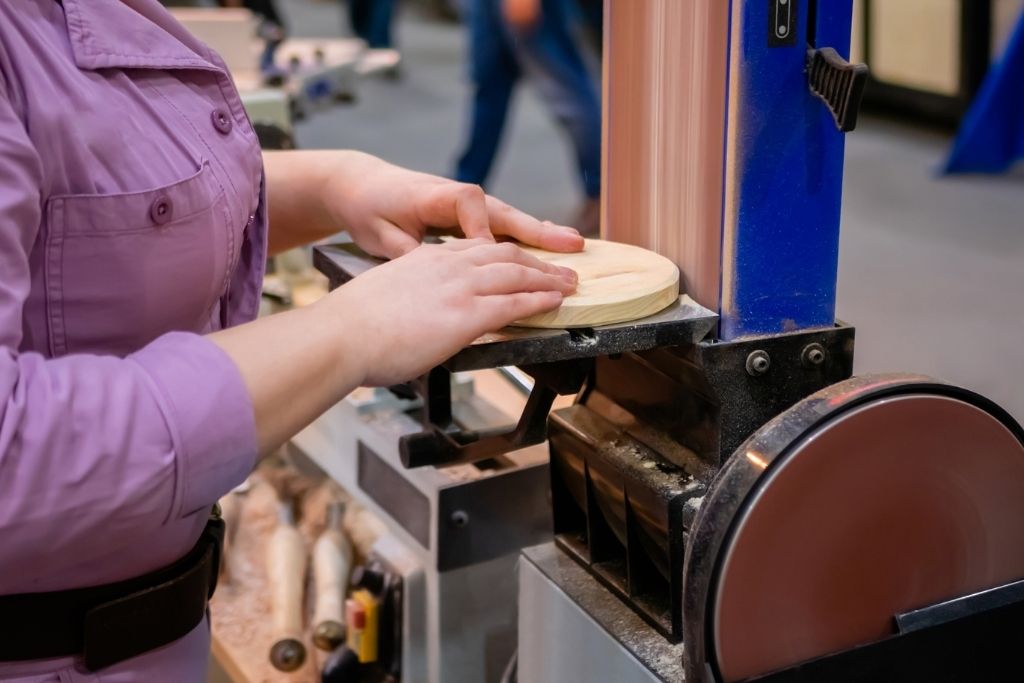
Build Quality
When possible, pick a model with an all-metal construction. Many hard plastics are quite durable and useful for some parts here and there. But they still can’t match the lifespan and rigidity of metal.
Make sure the benchtop sander has a solid base. Quality models often use cast-iron for this part to dampen vibration and provide greater stability. You will have an easier time keeping your workpieces in place while sanding.
More durable components will undoubtedly raise the cost. But they will be all worth it in the long run.
Usability
Look for sanders with clear instructions and ergonomic designs. The measurements and controls should be intuitive and easy to find. They can benefit beginners and experienced woodworkers alike.
The sander should be lightweight enough to move around when needed. But it also needs a base solid and heavy enough to withstand vibration. The ideal weight range for a bench sander is 30-45 pounds.
Variable Speed Settings
Some heavy-duty models allow the operator to choose the sanding speed before operating. It expands the range of materials and projects the machine can handle.
Adjustable Sanding Angle
You can sand a workpiece vertically, horizontally, or at any angle in between. Many sanders have a tilting belt arm to change this position.
Moreover, some models have add a worktable that can tilt from 0 to 45 degrees to accommodate the workpiece.
These adjustments allow you to hold the material at the most convenient angle when feeding it into the machine and support for easy sanding.
Dust control
Sanding creates a lot of dust during the process. It can reduce the durability of the belt and even clog it. Many serious health risks come from it as well.
Even if they don’t cause any trouble, those layers of dust are still a mess to clean up afterward.
Most quality sanders come with a dust collection mechanism. It often utilizes vacuum suction to pull up the sanding dust into a container (a bag or a canister) or your own vacuum. This way, you can empty the dust in one go.
For a combined disc/belt sander, it is better to have separate ports for each of them. They are less convenient to hook up but more effective at picking up dust than a single port.
Quick belt changing
If you change belts often, it could be a real chore. Look for sanders with an easy and quick way to take off and install a belt.
For example, automatic tensioning makes releasing the old belt much more convenient. It also saves you the hassle of manually adjusting tension for the new belt.
Frequently Asked Questions About Benchtop Belt Sander

How To Choose Belts For My Sander?
The grit value of a sanding belt determines its roughness (or fineness). The larger the number, the finer the belt can be.
Coarse sanding belts with grit values between 60 and 80 are a common choice for aggressive material removal. When you need to achieve smoother results, finer belts up to 120-grit are available.
Zirconium oxide and aluminum oxide abrasive belts work well on wood. For sanding metal like making knives, choose belts made from ceramic or silicon carbide.
And don’t forget to get the right size for your bench sander.
What Can’t Benchtop Belt Sanders Do?
In general, heavy-duty finishing is not a strong point of belt sanders. The huge, fixed base prevents you from moving around and sanding furniture from different angles as well.
Don’t force yourself to sand big objects that are too cumbersome or dangerous to hold. A portable belt sander would be a better choice.
On top of that, they are not a great tool for flattening objects with a lot of curves and tight corners like wooden models.
Why Does My Sander Keep Breaking Belts?
Many things can lead to this. Elements like extreme humidity and heat can reduce the lifespan and create constant breakages.
An old or low-quality belt that has gone through plenty of work is more likely to break as well.
If the belt of your sander keeps breaking, check your setup. Make sure to install the belt properly and apply the right tension. A belt running too tight or too loose may be under enormous strain and fail prematurely.
When Should I Replace The Sanding Belt?
The abrasive material on the belt keeps wearing away over time. When you feel your benchtop belt sander can’t remove stock as quickly as required, it is time for a replacement.
For safety reasons, use a new belt when you need signs of breakages.
What Is The Difference Between A Drum Sander And A Benchtop Belt Sander?
Drum sanders have a much smaller contact area than belt sanders. Go for them when you need a perfectly flat surface (such as a tabletop). Additionally, they can sand thin stock with great precision.
The heavy-duty finishing capability of drum sanders is top-notch. The benchtop models are quite compact and safe to use as well.
However, they can’t quickly remove large amounts of wood like drum sanders.
What Is The Difference Between Belt Sanding And Spindle Sanding?
Bench spindle sanders use vertical oscillating drums. You can add curves or shape profiles easier with them. On the other hand, belt sanders are better at rough sanding.
Do I Need To Buy Sanding Belts From The Same Manufacturer?
No. You can use belts from other brands with a compatible size on your sander.
What Important Safety Tips Should I Follow When Use Benchtop Belt Sander?
Benchtop belt sanders may not be the most dangerous tool in a workshop. But still, don’t put your guard down and follow these tips when working with them.
- Use protective equipment, including safety glasses, gloves, a dust mask, and hearing protection.
- Don’t wear any dangling clothing.
- Check the tension level regularly. Don’t start the tool when the belt is too loose or tight.
- Don’t push the wood against the belt aggressively. Move it slowly with care.
- Turn the machine off and unplug it before changing belts.
- Clean the sawdust around your workplace first if you want to sand metal. The sparks from sanding can start a fire.
Conclusion
After all, you have gone through our 5 top products reviews so which is the best one for you?
In our opinion, the Bucktool BD4801 is the winner for the best benchtop belt sander.
The width and speed of the belt can take on many common projects. You should run into no issue installing and operating it in your workshop. Its solid and durable construction guarantees a more pleasant sanding experience.
The machine can level and smoothen rough surfaces with minimal effort from you. It is one of the rare models that use direct-drive motors. The machine is low-maintenance and gets all sanding jobs done quickly.
As you can see that most bench-mounted belt sanders have a built-in disc sander as well. They take full advantage of the motor and reduce the need to buy two machines.
Choose the right machine, and you can handily switch between the belt and the disc on the same project. The sanding belt can flatten large areas and edges, while the disc is perfect for smoothing rough cuts on smaller objects.
These may be small tasks. But all this removing, smoothing, and shaping wood will certainly play a huge part in the final results of the projects done in your workshop.




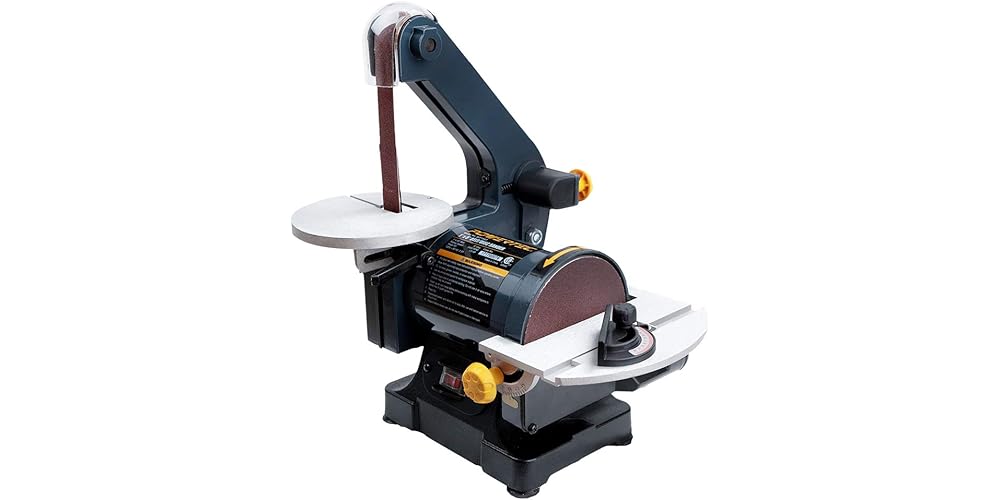
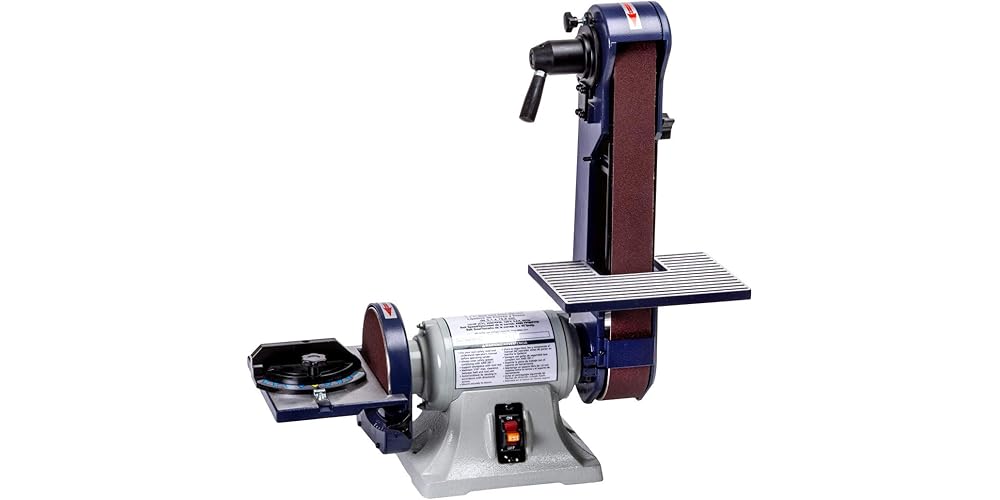



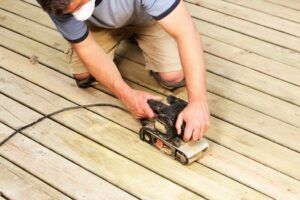
![How To Start A Woodworking Business [Ultimate Guide] How To Start A Woodworking Business [Ultimate Guide]](https://handykeen.b-cdn.net/wp-content/uploads/2021/10/woodworking-business-1-300x200.jpg)
